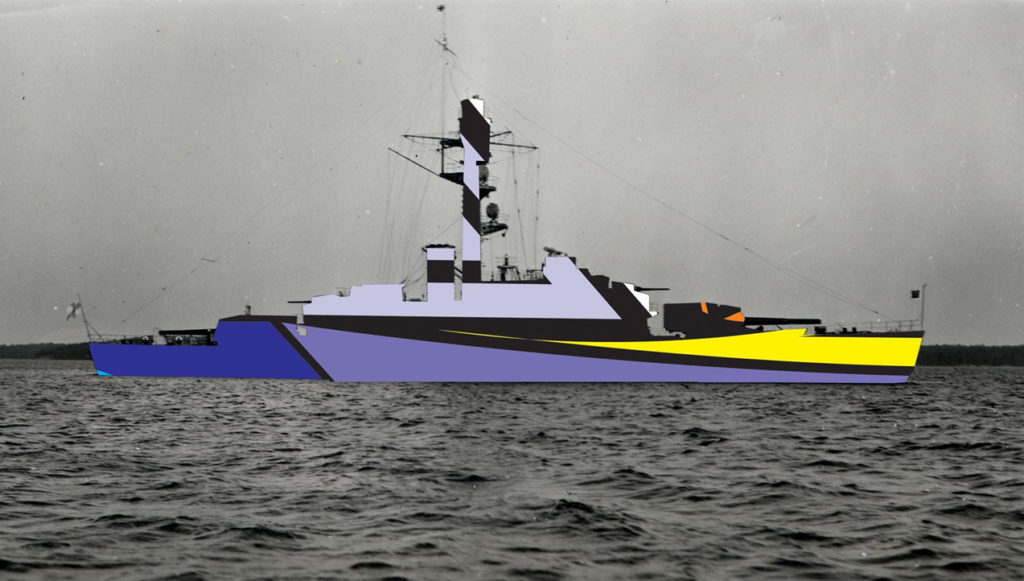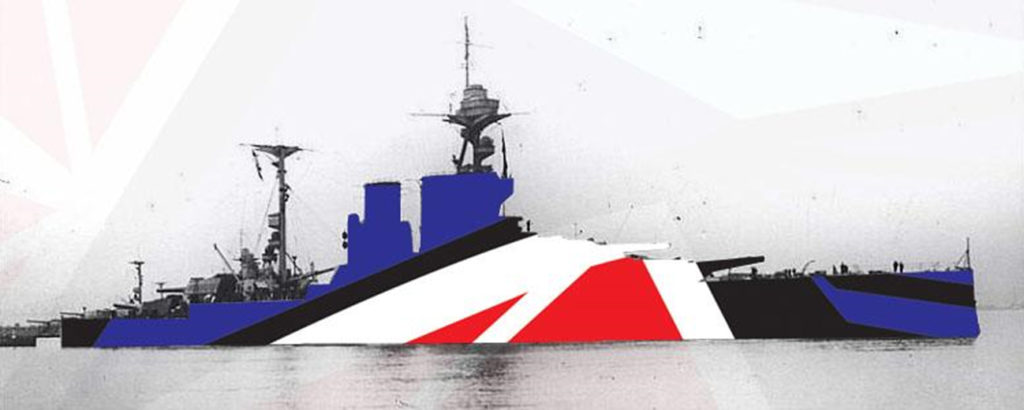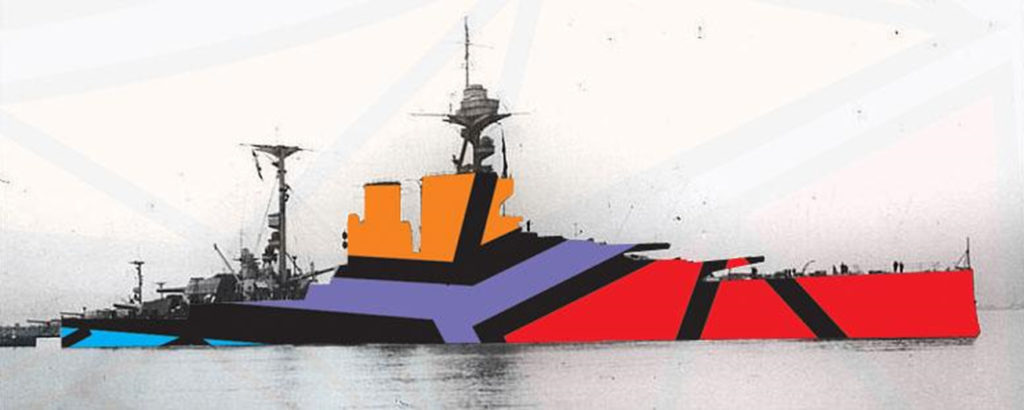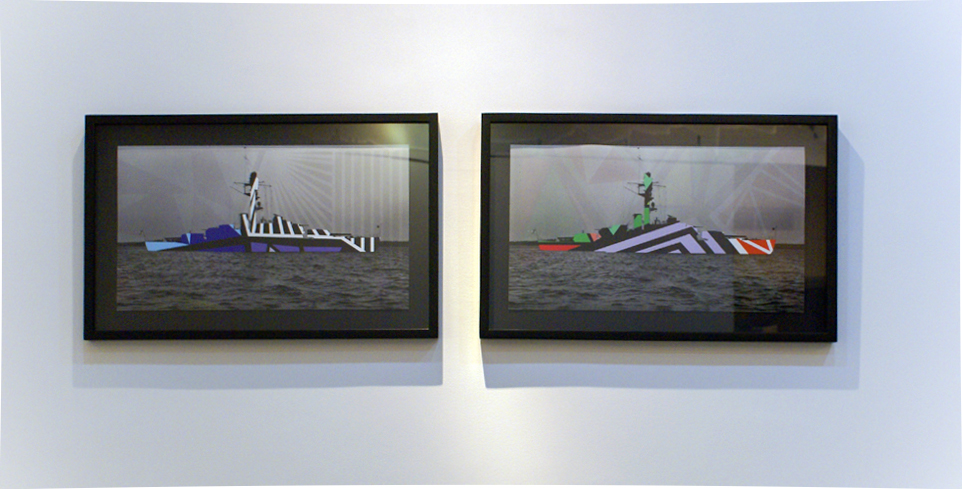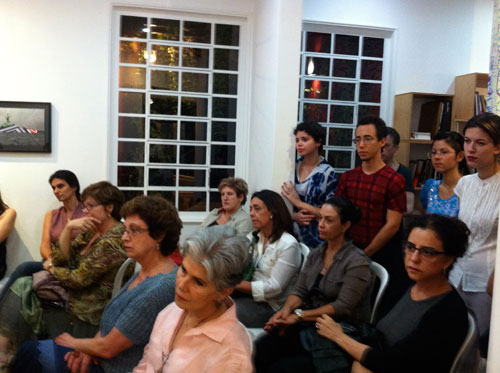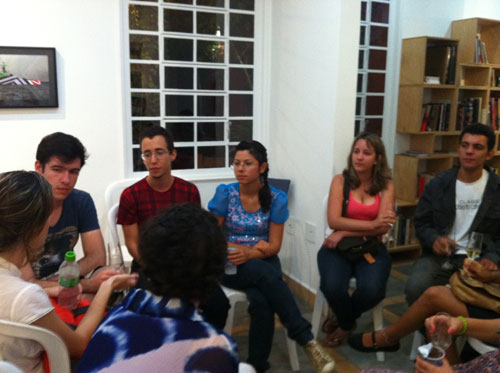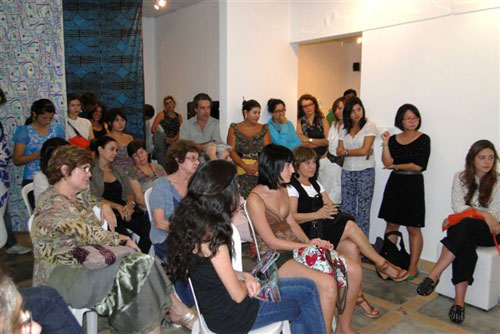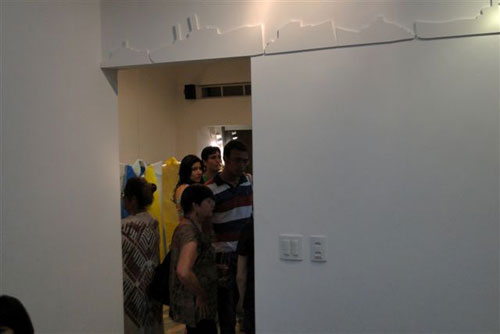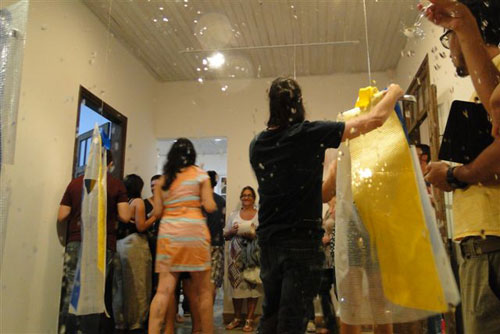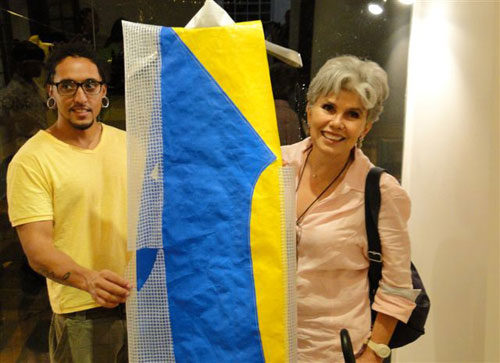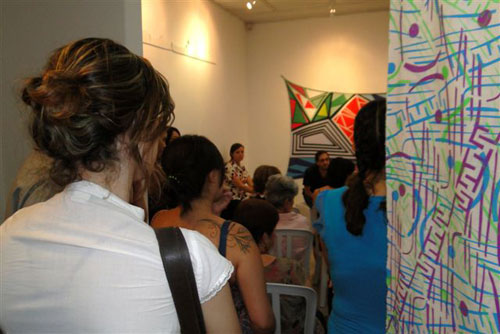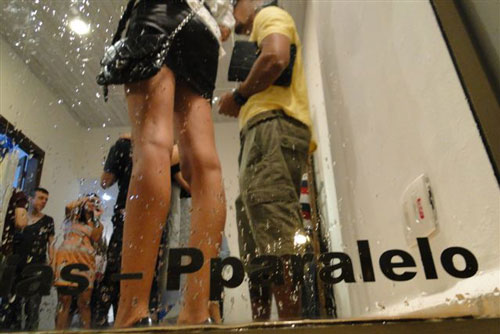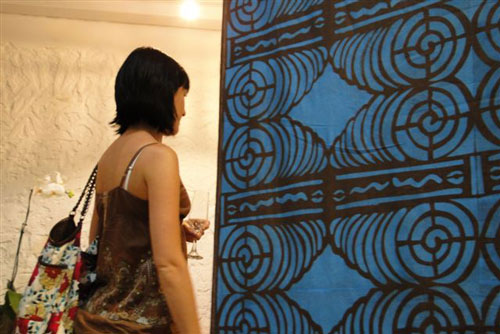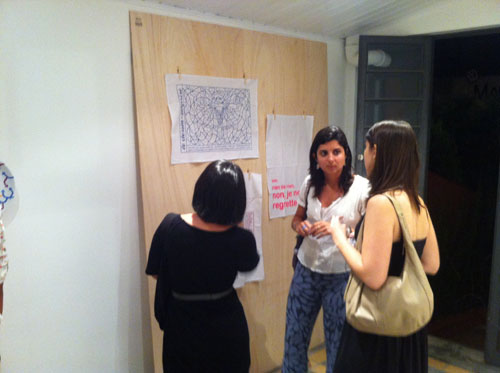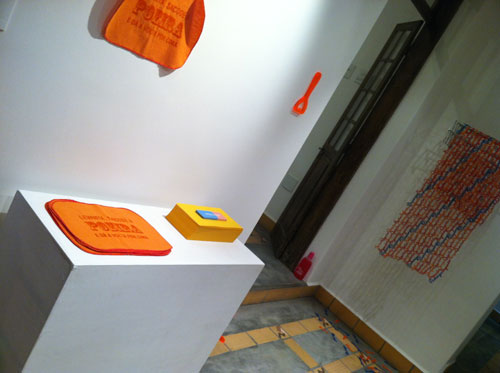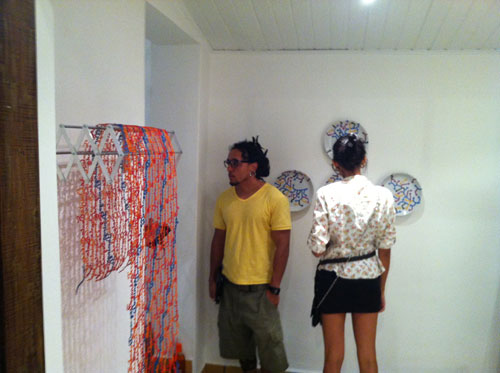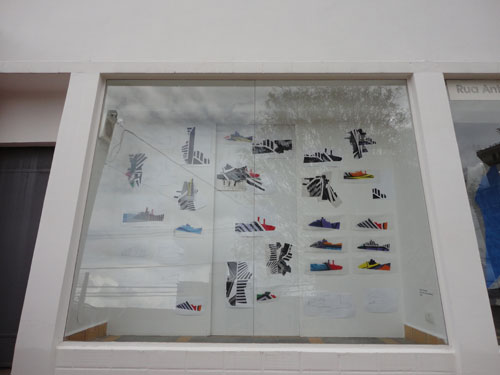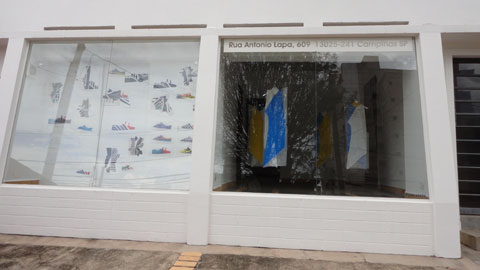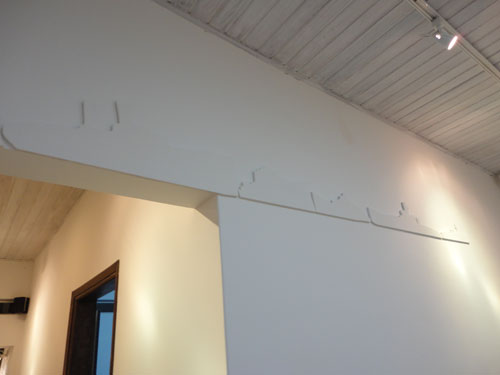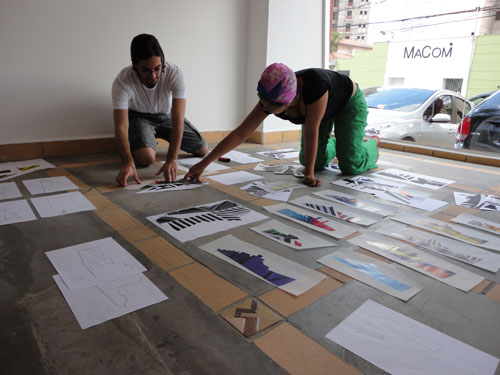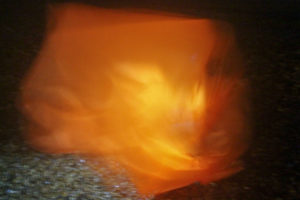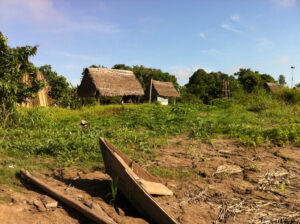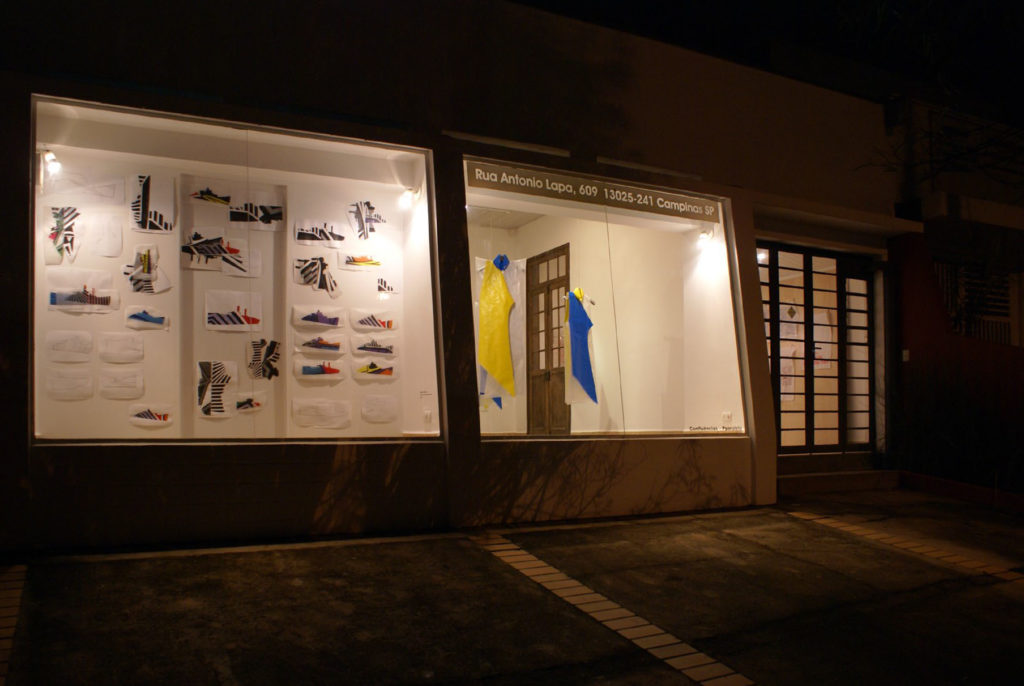
Camouflage series
Razzle dazzle
exhibition
2012
Brazil
22° 53′ 43.548” S 47° 2′ 58.452” W
Confluences Project – Pparalelo
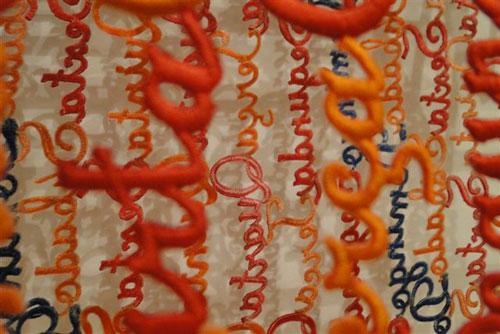
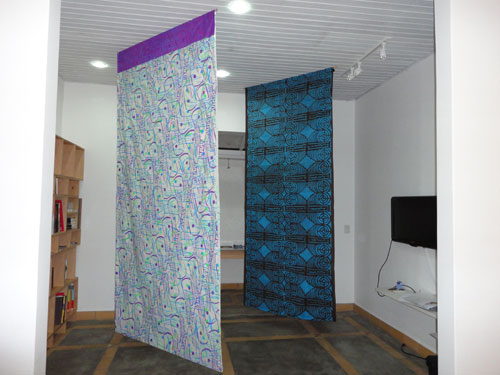
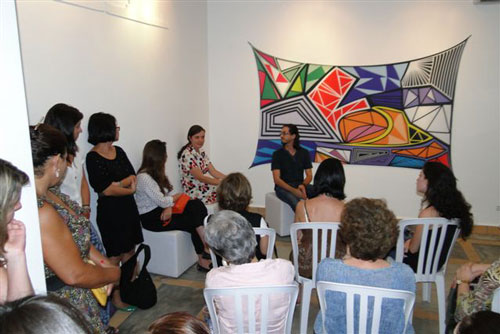
The Pparalelo de Arte Contemporanea de Campinas held in 2011 the project Confluências, in which it presented the individual production of artists members of the group and invited artists to occupy the entire space room of its then atelier.
For this edition of the project, I could Invite two fantastic artists: Monica Nador and Monica Schoenacker.
In the Entrance Hall, the artist Monica Schoenacker who has identical training and hybrid interests between Art and Design in her artistic career, presents the series “HomeWork”. Composed of some small interconnected domestic objects, designed with an evident communicational appeal, with which we come across the intimacy of the house. This same association is applied in the panel of approximately 220x 320cm.
The project also has another guest: Monica Nador, who presents two pieces of the series “Autoria Compartilhada” (Shared authorship), recently created for the opening of the building that houses the Pavilion of Brazilian Culture in Ibirapuera Park, São Paulo. The long fabrics, 6m high, are part of the investigations of JAMAC – Monica’s project at Jardim Miriam Arte Clube (SP) to create a line of prints derived from the proposals of painting and public art that she has been carrying out in recent decades. The video “Autoria Compartilhada”, exhibited until last Saturday at Galeria Lucia Brito, presents the context of the work. See at: http://autoriacompartilhada.wordpress.com
As usual, the proposal of Pparalelo unfolds the exhibition context in open discussions in which the exhibiting artists, special guests and the local public participation. Thus, the opening night included a discussion table on the trinomial Art-Fashion-Design with Hebert Gouvea, Monica Schoenacker and Luiza Testa. Luisa was the founder-owner of Fashion and Design Store 11.16, a project inaugurated 2 prior in Campinas, which equally presents different languages through the exhibition and sale of objects, artworks and collections of young national fashion.
The event was an opportunity to launch the trends website created by Hebert LAB_TIC. This virtual platform intended to disseminate the young production of Design accompanied by brief texts about trends and creative projects in Art and Fashion.
The body between
The series highlights my long-standing research and interest in hybrid forms in contemporary art and fashion in the 20th century. Based on the structures of late WW1 British ships that used an unexpected pattern of camouflage called Razzle Dazzle.
These works explore the boundaries between art and fashion through wearable sculptures, the installation of camouflaged objects, fabric prints, photocopies and collage studies.
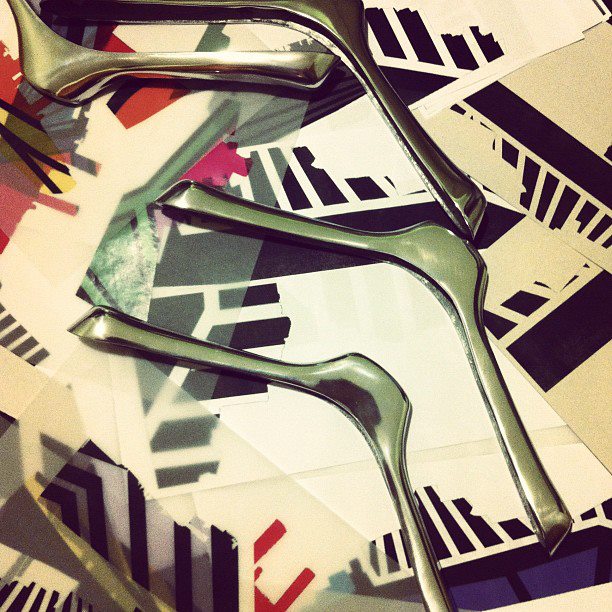
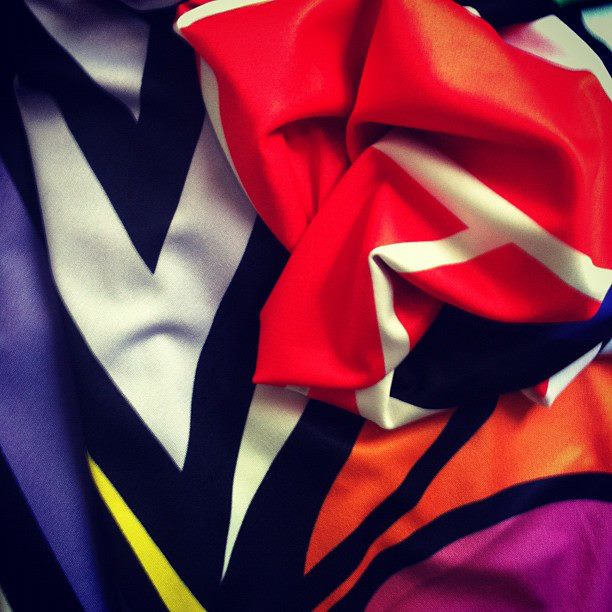
The exhibition space
Composed of 2 large windows facing the street. In the first space, a series of studies on new shapes were used to reimagine the vessel as visual composition.
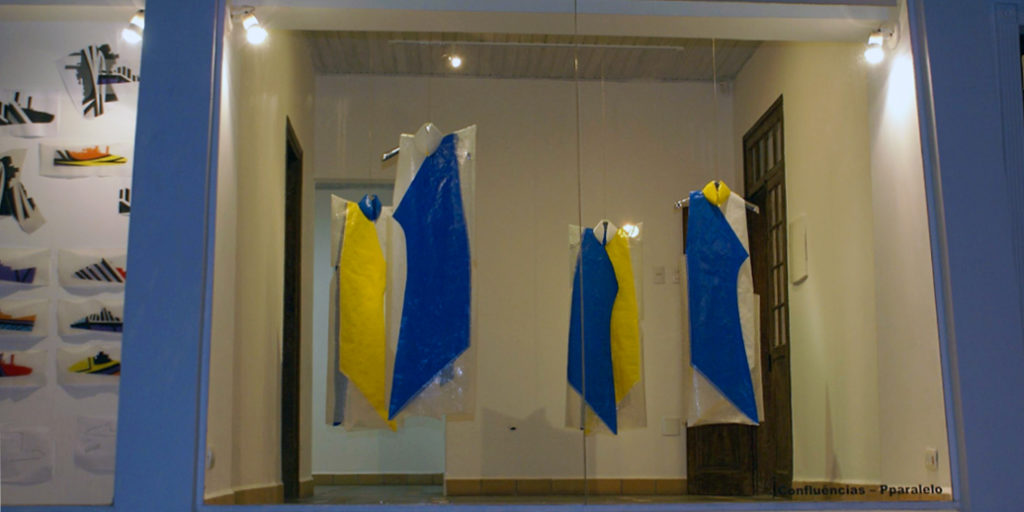
This served as the foundation for the other two series featured in the exhibition: graphic interventions on photographs and an interactive wearable sculpture installation.
The second window of the gallery offered an open view into the interior and displayed wearable objects similar to those found in fashion showrooms. Visitors were invited to interact with the installation, which featured objects hanging from the ceiling on custom-made aluminium hangers.
Using synthetic materials that are rigid and uncomfortable but suggest safety adds an element of tension or discomfort to the piece. The sculptures may also be designed to reshape the body’s silhouette, altering the viewer’s perception of their physical form.
Visitors to the installation would be able to interact with the objects by trying them on and experiencing the changes in their own silhouette and physical sensations. This installation can be thought-provoking and challenging, as it invites viewers to consider their bodies and how they are shaped by external forces. It also prompts reflection on societal expectations and norms regarding body shape and appearance.
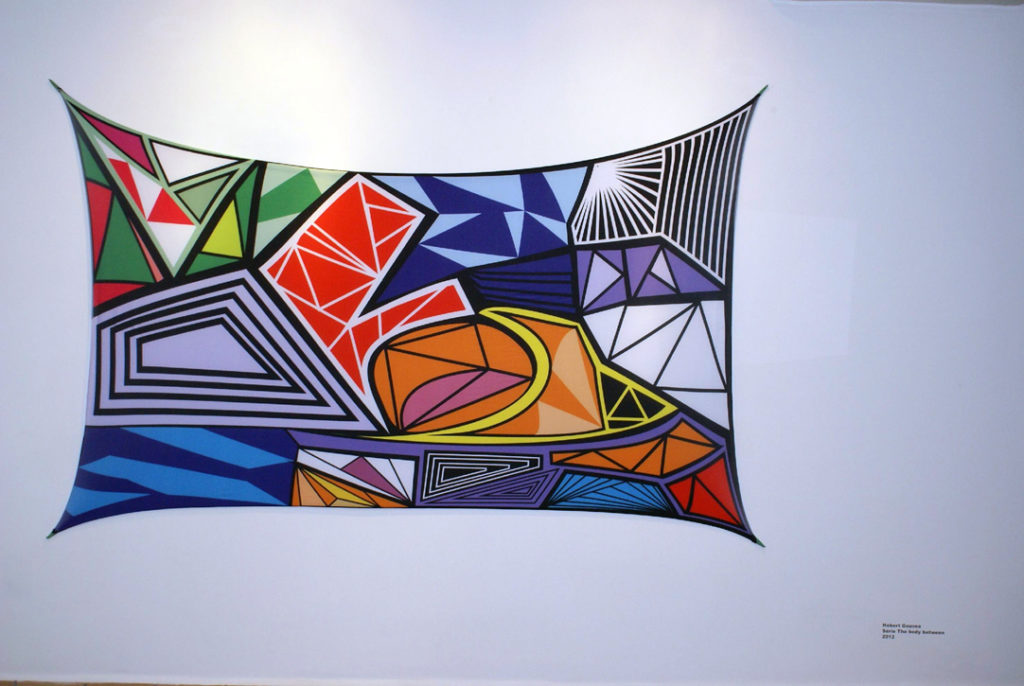
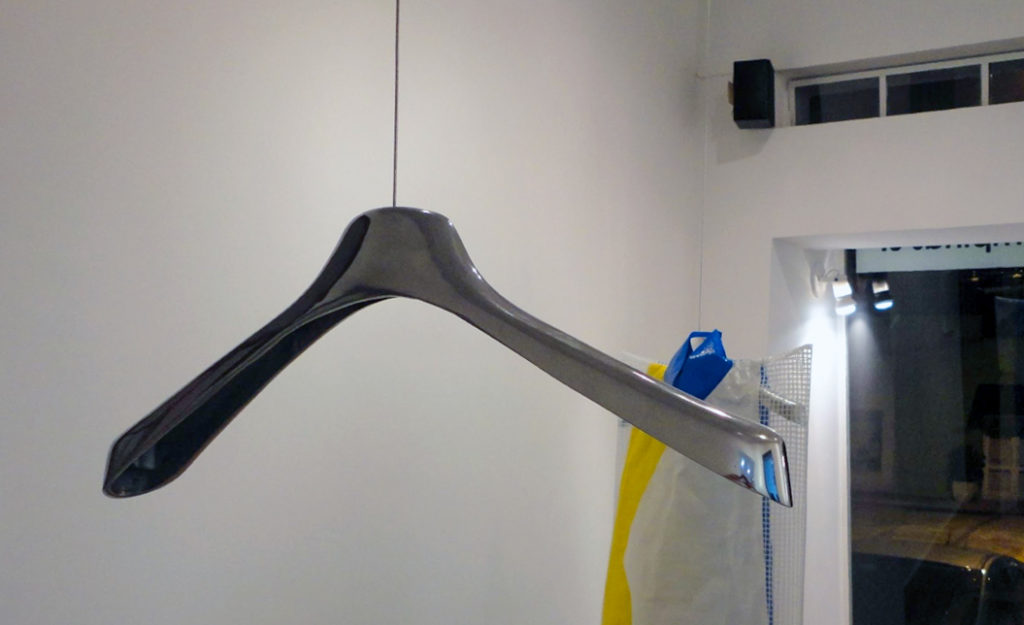
A large piece of lycra fabric featured the whole graphic composition created for this exhibition in the bigger room at the back of the gallery. The work faced a series of archival photographs of other ships that were used to build new visual patterns, rethinking how that could have impacted the conflict if used from its start.
The final installation was more subtle, but no less significant. A line of cutout ships painted in white was mounted on the white walls above the doorway leading to the room with the wearable sculptures. The shapes could only be seen from certain angles and in certain lighting conditions.
